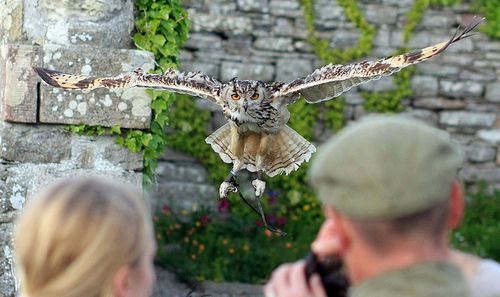Falconry is an ancient practice that began with the noble classes presumably in the first century or second century. The traditional lore is that the art began in central Asia, moved to the Middle East and then into Europe–but read this comprehensive summary from the International Association for Falconry & Conservation of Birds of Prey to get the scoop.
There are a handful of professional falconers who are paid to train and fly birds but there are also some opportunities at falconry centers, zoos, and the movie or television industry. A fairly recent income source is from the management of birds for airfields, businesses, or dump sites. Educational programs for various corporate groups or other demonstrations might also be an additional income source.
I may have said this before but I want to make a point here. One of the sad realities of the animal industry is that the popularity of a career with animals keeps the income levels down. There are more people who dream of working with animals than there are jobs. So, the abundance of people willing to work for free, or next to nothing, makes it easy to keep the wages low.
Animal care is costly and anyone who wants to work with birds of prey must apprentice and then provide adequate facilities for their birds when they get them. This sport is labor intensive, the laws are strict, and the birds need to be flown often.
Birds of prey need to be kept in top physical condition, the weight of any bird must be monitored closely, and they require specially built facilities. In addition, training and caring for a raptor requires a large investment of time and resources.
If that is not enough to dissuade most people, the licensing process weeds out those who are not serious about the profession/hobby. Most aspiring falconers must serve under an experienced falconer for a couple of years then there is a written test and a state inspection of the apprentice’s equipment and facility.
If you are interested in such a career the best thing to do is to visit facilities that conduct shows with birds of prey and to attend falconry meets and related events. Join some of the organizations such as the North American Falconers Association and talk to those active in it about the realities of the sport/profession/hobby.
You can find a nice list of resource links from American Falconry Magazine.
Photo Credit: Eric Charlton



